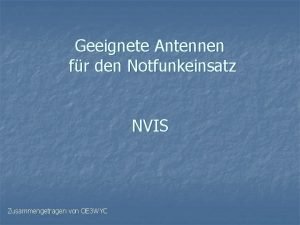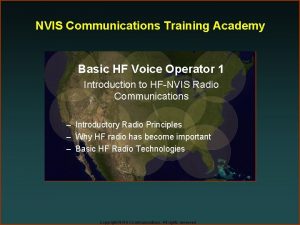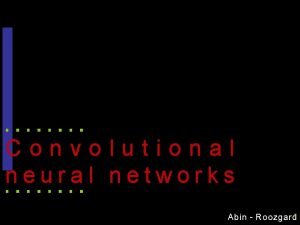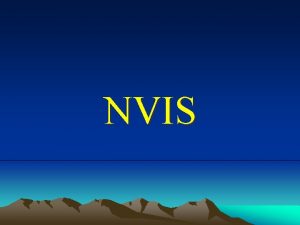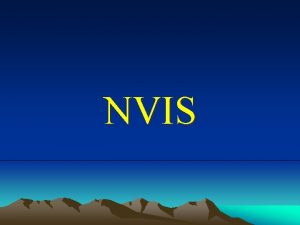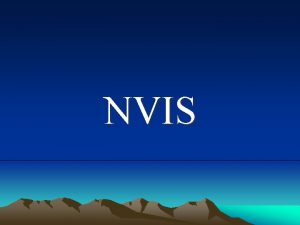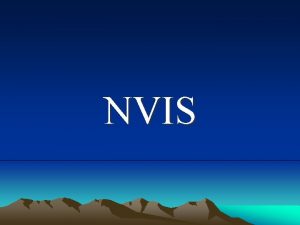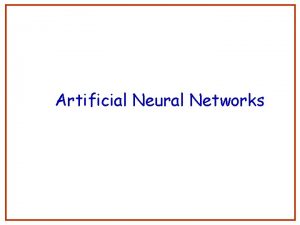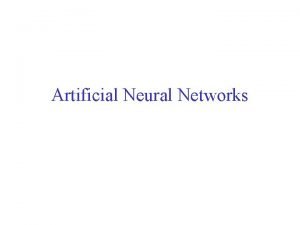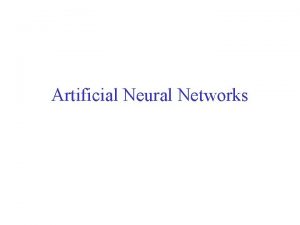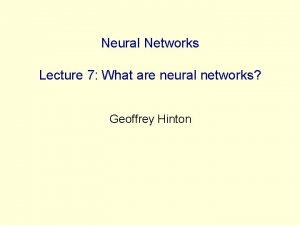NVIS An Interactive Visualization Tool for Neural Networks













- Slides: 13

NVIS: An Interactive Visualization Tool for Neural Networks by Matt Streeter advised by Prof. Matthew O. Ward and Prof. Sergio A. Alvarez

What is a Neural Network? • Weighted, directed graph, organized into layers • Set of neurons (nodes) and synapses (edges), with signals transmitted between neurons via synapses • Valuable tool for pattern recognition and function approximation

Why create a visualization tool for neural networks? • Understand how neural networks work, gain insight into problem being solved • Understand how genetic algorithm evolves networks • Other tools exist, but do not show neuron activations or genealogical relationships

Feedforward network visualization • Synapse strength represented by length and brightness of colored bars (linear scale). Blue lines indicate positive weights; red lines indicate negative • Diameter of white circles represents neuron’s output or activation • Each weight acts as a slider

Compact matrix representation • Purpose is to allow many networks to be displayed on the screen at once • One matrix for each level of weights • Row x, column y of matrix n represents weight from node y of layer n to node x of layer n+1 (same colors)

Generations & family trees • Row of compact matrix for each generation, ordered by fitness • User can select any network in the population history • Separate window shows family tree of selected network

Interactive environment • Set evolution strategy, network architecture, and training set • Graph representation and family tree available for any network in population history • Load/save networks • Real-time fitness graph

Designing networks • By dragging weights, user can design a network to solve a problem, or refine a network that has already been trained • Real-time display of fitness score; easy to see importance of particular weight • Not a practical way to find a network to solve a problem

Understanding genetic drift • Genetic drift is tendency for members of artificial populations to all be alike • Initial diversity in generations 0 -2, rapidly lost in generations 3 -5 • Best (leftmost) network in generation 3 is parent of best network in generation 4, grandparent of best 8 in generation 5, and ancestor of all later networks (not shown)

Changing weights & local optima • Error backpropagation algorithm performs gradient-based search (local optimum) • Weight dragged while backprop is running will either “snap back” to original optimum, or all weights will shift to new optimum • Can estimate the length of a local optimum with respect to each axis in weight-space

Extracting domain knowledge • Positive weights in all but first layer; effect of input nodes therefore directly related to incident weights • Higher crime rates (C) tend to reduce value of house; higher number of rooms (R) tends to increase value • Analysis could be applied to problem domains where no a priori knowledge exists

Future work • Graph representation does not scale well • Implement a variety of evolutionary algorithms (breeding & selection schemes) • Depict network architectures other than feedforward • User evaluation

For more information. . . • Visit http: //www. wpi. edu/~mjs/mqp • See technical report WPI-CS-TR-00 -11, available at: http: //www. cs. wpi. edu/Resources/techreports/index. html Questions?
 Oe7opj
Oe7opj Language identifier
Language identifier Pixel recurrent neural networks.
Pixel recurrent neural networks. Deep forest: towards an alternative to deep neural networks
Deep forest: towards an alternative to deep neural networks Audio super resolution using neural networks
Audio super resolution using neural networks Sparse convolutional neural networks
Sparse convolutional neural networks Deep neural networks and mixed integer linear optimization
Deep neural networks and mixed integer linear optimization Audio super resolution
Audio super resolution Predicting nba games using neural networks
Predicting nba games using neural networks Visualizing and understanding convolutional networks
Visualizing and understanding convolutional networks Netinsights
Netinsights Neural network matlab toolbox
Neural network matlab toolbox Convolutional neural networks
Convolutional neural networks Convolutional neural networks for visual recognition
Convolutional neural networks for visual recognition
